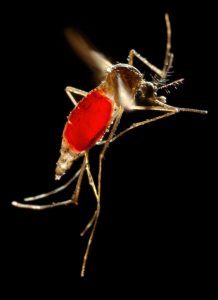By NewsDesk @infectiousdiseasenews
Dengue fever is seeing a massive resurgence in a number of countries around the globe and according to epidemiologist at the CDC’s Dengue Branch in Puerto Rico, Tyler Sharp, “This is turning out to be a very bad year for dengue, probably the worst we’ve had since 2010.”

There has been 2.7 million cases of dengue in the Americas, including more than 2 million in Brazil and more than 100,000 cases in Mexico, Nicaragua and Colombia so far.
In South and Southeast Asia, countries are reporting significant increases: Bangladesh has seen nearly 97,000 cases to date, much more than all the cases reported total annually since 2000.
In the Philippines, 360,000 cases have been reported and according to OCHA, this is the largest dengue outbreak in the last ten years, or since the disease has been monitored in the Philippines.
Thailand, Malaysia and Singapore are all experiencing increases in cases in 2019.
Even the tiny Pacific Island of Guam reported their first locally transmitted cases in 75 years.
“Once you have a dengue outbreak that’s occurring, it’s quite difficult to stop it. It’s also difficult to contain it,” Sharp explained.
According to a Direct Relief report from last month, epidemiologist at the London School of Hygiene and Tropical Medicine, Oliver Brady said, “Vector-borne diseases are less prevalent now than they were 10 or 20 years ago, but for dengue that’s not the case,” he said. “It’s one of the few infectious diseases at a global scale that’s still increasing and expanding.”
Why the increases this year? Some suggest that a warming climate will allow the mosquito vector, Aedes aegypti, to spread to previously more temperate regions.
Also as the global population becomes more urbanized, dengue may get worse as dengue thrives in more densely populated places.
Dengue does tend to work on a cycle, breaking out once every three to five years. After each outbreak, “the good news is that a lot of people have been infected, so you have herd immunity that lasts for awhile, until the next cycle,” said Sujan Shresta, an infectious disease researcher at the La Jolla Institute for Immunology.
WHO notes the incidence of dengue has grown dramatically around the world in recent decades. A vast majority of cases are asymptomatic and hence the actual numbers of dengue cases are underreported and many cases are misclassified.
One estimate indicates 390 million dengue infections per year (95% credible interval 284–528 million), of which 96 million (67–136 million) manifest clinically (with any severity of disease). Another study, of the prevalence of dengue, estimates that 3.9 billion people, in 128 countries, are at risk of infection with dengue viruses.
- Iceland reports increase in norovirus
- East Texas State Fair Linked to Legionnaires’ Outbreak
- Measles in Brazil: 9.3K cases in 2019, Most in the Americas
- Another Ground Beef Salmonella Outbreak
- Thailand: 4 Important Infectious Diseases in 2019
- Measles in Japan 2019: Highest number of cases in years
- Former Senator Kay Hagan Among 20,000 Americans Diagnosed Annually with Encephalitis



One thought on “Dengue outbreak: ‘Probably the worst we’ve had since 2010’ says CDC epidemiologist”